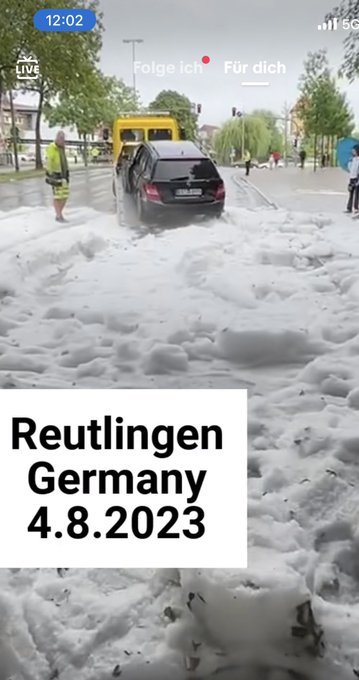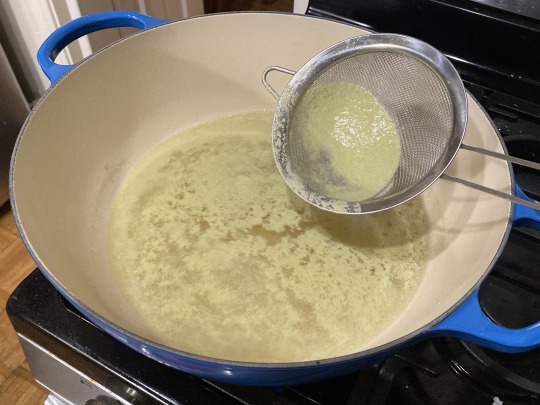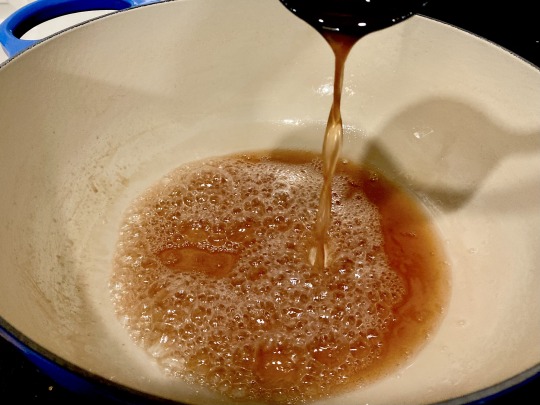#الثلج.
Explore tagged Tumblr posts
Text
"كرة من الثلج".. ما الذي حصل للأرض قبل 635 مليون سنة؟ وهل سيحدث مجددا؟
إلى الآن يعتقد العلماء أن موجة “الكرة الثلجية” لم تضرب الأرض مرة واحدة فقط، بل مرتين أو 3 مرات، ولا يوجد ما يمنع هذه الظاهرة من الحدوث مجددا، خاصة أنها تتعلق كذلك باضطرابات في مدار وميل كوكب الأرض ما زالت تحدث إلى الآن خلال تاريخها واجهت الأرض عدة عصور جليدية انخفضت خلالها درجات الحرارة بشكل جذري، وانتهى آخر تلك العصور قبل حوالي 12 ألف سنة، ونحن نعيش الآن في م�� يسميها العلماء فترة “بين جليدية”…

View On WordPress
0 notes
Text
أشكال الناس تتغير بعد ما تسمع أفكارهم وتعرف أسلوبهم.
#ljgrace#يذوب الثلج اللي كان محليهم ويطلع القبح على اصوله فعلاً#عرب تمبلر#اقتباسات تمبلر#أصدقاء تمبلر#أهل تمبلر#ادب#اقتباس#عربي#تمبلريات#نص عربي#كتابات عربيه#اقتباسات ادبية
32 notes
·
View notes
Text









القرى اليابانية المغطاة بالثلوج من خلال عدسة المصور ينغ يين Ying Yin
4 notes
·
View notes
Text
من الاشياء المحببة إلى قلبي ❄️🔮❤️

2 notes
·
View notes
Text
سقوط الثلج في ولاية
Baden-Württemberg
Reutlingen في منطقة
القريبة من شتوتغارت. وأجواء ماطرة اليوم في ميونخ وجنوب #ألمانيا والنمسا
عاصفة برَد قوية تجبر سلطات مدينة ألمانية على إخراج كاسحات الثلج في أوج الصيف


5 notes
·
View notes
Text
أفضل حلول تنقية المياه والتبريد مع زووم عمان
مرحبًا بك في مدونتنا الرسمية على تمبلر! هنا حيث نقدم لك كل ما تحتاج معرفته عن أحدث تقنيات تنقية المياه، التبريد، وصناعة الثلج. نحن في زووم عمان نؤمن بأن المياه النقية والمنتجات عالية الجودة هي أساس حياة صحية ومريحة.
ما الذي نقدمه؟
فلاتر المياه: لأن صحتك تستحق الأفضل، نقدم فلاتر تضمن لك مياهًا نظيفة وآمنة.
مبردات المياه: الحل المثالي لمياه باردة منعشة طوال العام.
شمعات الفلاتر: للحفاظ على أداء فلاترك بأفضل حال.
صانع الثلج: مثالي للمنازل والمقاهي والشركات الصغيرة.
محطات تحلية المياه: للحلول المتكاملة التي توفر مياه شرب نقية مهما كانت التحديات.
قطع الغيار: نوفر جميع الأجزاء الأصلية لضمان صيانة سهلة ودائمة.
لماذا تختار زووم عمان؟
جودة مضمونة: منتجاتنا مصممة لتدوم وتعمل بكفاءة عالية.
دعم احترافي: فريقنا هنا لمساعدتك في كل خطوة، من اختيار المنتج المناسب إلى خدمات ما بعد البيع.
أسعار تنافسية: نقدم جودة عالية بأسعار تناسب الجميع.
ماذا نقدم في مدونتنا؟
في مدونة زووم عمان على تمبلر، نشاركك نصائح عملية عن:
كيفية اختيار أفضل فلاتر المياه.
أهمية شمعات الفلاتر في ضمان جودة المياه.
صيانة مبردات المياه لتعمل بكفاءة.
أحدث تقنيات محطات تحلية المياه.
زوروا موقعنا الرسمي للحصول على المزيد من التفاصيل والمنتجات: زووم عمان. تابعونا للحصول على التحديثات المستمرة حول أفضل حلول تنقية المياه.
عيش حياتك ��مياه نقية وراحة لا مثيل لها!
#موزع المياه#موزع مياه زووم#صانع الثلج#فلتر التناضح العكسي#فلتر مياه#سوفتنر#مبرد المياه#معالجة المياه#الأجهزة المنزلية#نظام تصفية المياه#جهاز تنقية المياه#نظام RO#جهاز مبرد وسخان المياه#سوفتنر المياه#معالجة المياه بالأشعة فوق البنفسجية#حلول المياه المنزلية#تقنيات المياه#أنظمة المياه الصناعية#حلول المياه النظيفة#أجهزة زووم
0 notes
Text
الجدول الزمني لتطور الحياة يمتد إلى ما يقرب من 1.5 مليار سنة
إذا كان العالم كله مسرحًا، وكل الأنواع مجرد ممثلين، فيمكننا أن نجد مخارجها ومداخلها في السجل الصخري. يسلط هذا المنظور الشعري الضوء على التطور المستمر وتكشف تاريخ الحياة، وهي قصة محفورة في الحفريات وطبقات الرواسب التي توجد فيها. وقد قام تحليل حديث أجرته جامعة فرجينيا للتكنولوجيا بتوسيع نطاق هذه الرواية إلى ما يقرب من ملياري عام، مما يوفر صورة أكثر اكتمالاً عن أصل الحياة وتنوعها وانقراضها. توسيع…
#كرة الثلج الأرضية#الفطريات#الكائنات البحرية#النباتات#البكتيريا#التنوع البيولوجي#الجدول الزمني#الحيوانات#السجل الصخري#الطحالب#العصر الفانروزوي#تاريخ الحياة#تطور النظم البيئية#تطور الحياة
0 notes
Text



1 note
·
View note
Text
منظر الثلج مريح للعين والقلب 🌧🤍.
ᴬʸᴸᴬ 🦌
64 notes
·
View notes
Text

[ID: A pyramid of crystalline snow topped with deep orange syrup on a bright blue plate. End ID]
بقسمة / Buqsuma (Palestinian snow dessert)
بُقْسُمَة ("buqsuma"), or بوظة الشتاء ("būẓa shitā'", "winter ice cream"), is a dessert, possibly of Aramaic origin, eaten in cold and mountainous rural regions within Palestine, Syria, Jordan, Lebanon, and Turkey. It consists of freshly fallen snow topped with grape molasses (دبس العنب; "dibs al-'inab"), date molasses, pomegranate molasses, or storebought snow syrup (شراب الثلج ; "shrāb aṯ-ṯalj"). In Lebanon it may be topped with honey or orange syrup; and in Syria and Lebanon it may also be called سويق or سويقة ("sawīq" or "sawīqa").
Buqsuma is eaten for only a few days a year at the end of the snowy season in February. An old rhyme cautions against eating snow too early in the season:
أول تلجة دم تانية تلجة سم تالتة تلجة كل ولا تهتم
("ʔawwal tallaja damm "tānya tallaja samm "tālta tallaja kul wa lā tahtamm")
("The first snowfall is blood "The second snowfall is poison "The third snowfall, eat and don't worry")
Journalist Hussein Saqr speculates that the intention may be to allow the first snows to clear the air from summer and fall dust and other pollutants before the snow is safe to consume.
During these late winter days, eating and sharing buqsuma becomes a social ritual; guests are invited to share the dessert from a wide platter, or given individual bowls to dress to their taste with syrup, milk, and sugar. Children bring bowls of snow inside and eat buqsuma by the fire to warm up and recuperate from a day at play.
In Syria, buqsuma is prepared especially in the مُحافظة السويداء ("Muḥāfaẓat as-Suwaydā'"; Suwayda Governorate) in the south; in the طرْطوس ("Ṭarṭūs") and إدلب ("'Idlib") Governorates in the northeast; and along the جبال لبنان الشرقية ("Jibāl Lubnān ash-Sharqiyya"; Anti-Lebanon mountain range) from جبل الشيخ ("Jabal ash-Shaykh"; Mountain of the Sheikh / "Mount Hebron") to the جبال القلمون ("Jibāl al-Qalamūn"; Qalamoun Mountains) in Damascus Governorate.
In Palestine
Within Palestine, buqsuma is eaten only in الخليل ("Al-Khalīl" / "Hebron"), in the occupied West Bank. Palestinian food writer Reem Kassis points out that the regional specificity of the dish is due to the nature of the land: Al-Khalil is one of the few places in Palestine to receive snow.
Al-Khalil is also famous for its viticulture. "It is well known among Palestinians that Al-Khalil grows the best grapes," according to embroidery artist Wafa Ghnaim. Though grape vines have existed in Palestine since antiquity, Al-Khalil was one of the few locales to maintain them even during the Crusades, which caused the abandonment of olive and grape orchards elsewhere. As with oranges and pomegranates, an association between terroir, agriculture, and design reveals itself in Palestinian art: the قطف عنيب ("qiṭf 'inab"; "bunch of grapes") motif is common in Al-Khalil embroidery (تطريز; "taṭrīz"; often transliterated "tatreez").
Around 1700, Rabbi Gedalia mentions Al-Khalil's grapes as being particularly praiseworthy:
ויש בא"י הרבה פירות האילן, כגון ענבים, תאנים, ורמונים, זתים […]. והענבים הם גדולים ועגולים בירושלים. אבל בחברון תוב"ב הם מרובים וגדולים מן הענבים אשר בירושלים. וכשמוכרים את הענבים של חברון בירושלים משבחים אותם וצועקים: בואו ותקנו הענבים של חברון ! ומענב אחד מתמלא הפה ממשקה. And there are in the land of Israel many tree fruits, such as grapes, figs, pomegranates, and olives [...]. The grapes are big and round in Jerusalem, but in Hebron they are more numerous and larger than the grapes in Jerusalem. And when vendors sell the grapes of Hebron in Jerusalem, they praise them and shout: Come and buy the grapes of Hebron! And one grape fills the mouth with nectar. (pp. 337-8)
Al-Khalil's viticulture is closely integrated with Palestinian food culture. Three distinct harvests yield different products. In the early spring, some of the leaves from the grape vines (وَرَق الدوالي; "waraq ad-dūwāli") will be harvested, when they are young, tender, and sour: good for stuffing with rice, meat, and vegetable fillings to make several popular Palestinian dishes.
Later in the spring, grape farmers harvest early, sour grapes (حصرم; "ḥiṣrim"; Levantine dialect "ḥuṣrum"). Some of these will be pressed to make عصير حصرم ("'aṣīr ḥuṣrum"; "juice of sour grapes"), a tart liquid that may be drunk plain, or used to give acidity to soups or salads. Others will be pickled in brine, or dried and ground to make a sour condiment called "سماق الحصرم" ("sumāq al-ḥuṣrum," "sour grape sumac").
The third harvest is in the late summer, when the grapes have fully ripened. Grape farmers in Al-Khalil may sell some of their summer harvests to Palestinian wineries and arak distilleries. Other ripe grapes will be pressed and their juice boiled down and dried to produce مَلبَن ("malban"), a Levantine fruit leather. And still more of this juice will be reduced into dibs al-'inab, which is then used to make buqsuma, added to tea as a sweetener, or mixed into tahina and scooped up with bread; it is especially popular during Ramadan as a quick way to boost energy.
Dibs al-'inab has been produced in Palestine for hundreds of years. Rabbi Gedalia describes grape molasses, which he calls "grape honey" ("דבש של ענבים"; "dvash shel 'anavim"):
שמבשלים את התירוש היוצא מן הענבים מיד כשסוחטין אותן, והוא אז מתוק מאוד כדבש ממש, וכ"כ מבשלים עד שנעשה עב כמו דבש. They cook the must which is expressed from the grapes immediately after they are squeezed. It is then very sweet, like real [bee's] honey. Then they cook it again until it becomes thick as honey. (p. 338)
The recipe below is for buqsuma with Al-Khalil-style grape molasses.

[ID: An extreme close-up on snow crystals topped with syrup in bright white and various shades of orange; bubbles are trapped throughout the syrup. End ID]
Viticulture Under Occupation
Today, the tending and harvesting of grapes in Al-Khalil take place under the shadow of Israeli settlements. Israel encourages the transfer of settler populations to settlements in Al-Khalil—including particularly fervent Israeli nationalist cells in the middle of Palestinian areas—with financial incentives and the creation of infrastructure that only settlers can move through freely. Palestinians are forbidden to drive in the "H2" area of Al-Khalil, which encompasses the central Old City and the الحرم الإبراهيمي ("Al-Ḥaram al-Ibrāhīmī"; Sanctuary of Abraham), and has been under Israeli military control since 1997. Israel conducts regular raids in the nominally Palestinian "H1" area, forcing people to leave their homes, destroying property, and committing arbitrary arrests and imprisonments.
The rapid expansion of settlements in the areas around Al-Khalil, such as those in what Israel calls גּוּשׁ עֶצְיוֹן (“Gush Etzion”; Etzion Bloc) and גִּבְעַת חַרְסִינָה ("Givat Harsina"), pushes Palestinians into ever-smaller and denser areas surrounded by settlements, rendering them still more vulnerable to Israeli control.
Alessandro Petti describes the strategy by which Israel fragments and isolates Palestinian areas, while allowing flow of movement between territories for non-Palestinians, as a distinction between free-flowing settler "archipelagoes" and Palestinian "enclaves." Infrastructure such as patrols, roadblocks, barriers, curfews, strip-searches and thorough searches of luggage—to which only Palestinians are subjected—make travel a time-consuming, nerve-wracking, and uncertain process: one that may end with being denied a permit, turned back from a border, or jailed for driving on a road which turns out to be prohibited to Palestinians. Because the rules are constantly changing, Palestinians may continue to avoid a road that is no longer actively barricaded out of fear that attempting to traverse it will lead to arrest.
Official Israeli military policy and settler violence alike cast a pall on Palestinian agricultural tradition and innovation. Farming and shepherding communities in the southern hills of Al-Khalil have been subjected to harassment, home demolition, and forced displacement at the hands of settlers and military bulldozers. Settlers burn grape and olive orchards and cut down mature grape vines. Palestinians are no longer allowed to access ancestral agricultural land that has been overtaken by colonists. Israeli military orders and settler harassment emptied Al Khalil's Old Souq of its vegetable and fruit markets in 2000; in 2019, plans were made to raze Palestinian shops and build a new settlement atop them. These plans would move forward in July of 2023.
Reprisal and collective punishment in the wake of militants' October 7th attacks on settlers have been felt in the West Bank and also impact agriculture in Al-Khalil. Grapes rot on the vine with farmers forbidden to tend them. Streets have been closed, shutting Palestinian farmers into their homes, while Palestinian shepherds in villages in the Al-Khalil area have been displaced and harassed with drones. Settler attacks and destruction of crops, already on a continual uptick for the previous several years, increased to a new high in 2023.
Olives, Grapes, and Resistance
Agriculture has been an important site of Palestinian resistance to settler incursion as, despite harassment, surveillence, and violence, Palestinians insist on staying on their land and in their homes. The Palestinian minority who inhabit the H2 area of Hebron, continuing to tend their olive trees, prevent the area from becoming settler-only and keep alive the hope that Al-Khalil will not become a "ghost town."
Various projects based in Al-Khalil combat settler technologies and strategies. Farmers in Al-Khalil launched the Cooperative Society for Agricultural Marketing and Processing in 1984 to increase grape farmers' self-sufficiency, reduce produce waste, and contribute to the production of Palestinian grape delicacies. The 2022 Counter Surveillance project, launched by Palestinian activist Issa Amro and artist Adam Broomberg, meets the Israeli security cameras stationed among Al-Khalil's olive groves with its own video feed, livestreamed online and to art museums.
Palestine's annual grape festival at حلحول ("Ḥalḥūl"), just north of Al-Khalil, took place in 2023 as scheduled; farmers displayed boxes of grapes of all colors and varieties, and sold dibs, malban, raisins, and jam. And Palestinian farmers and activists contribute to resurgences of indigenous seed varieties—such as the دابوقي ("dābūqi") grape, historically particularly prominent in Al-Khalil—in an effort to preserve Palestine's biodiversity and economic self-sufficiency.
Buy seeds from the Palestinian Heirloom Seed Library
Help Palestinian families evacuate Gaza
Contribute to an eSIM donation drive
Ingredients:
For the syrup (makes 2/3 cup):
2.5kg (5.5lb) tart green grapes, stems removed
For the base:
A large bowl of fresh snow
If it doesn't snow where you live, you can try making shaved ice using a snowcone machine; putting water in an ice-cream maker until you achieve a slushy texture; or running ice cubes through a blender.
Instructions:
For the syrup:
1. Remove grapes from their stems and rinse.

2. In a large bowl, mash and muddle grapes with your hands or a potato or bean masher; or pass grapes through a blender, food mill, or juicer.
3. Strain mashed grapes through a metal strainer, and then a cheesecloth (if you used a juicer, skip right to the cheesecloth). I had 4 cups (1 litre) of grape juice at this point.

4. Pour grape juice into a thick-bottomed pot with a large diameter, preferably one with a light-colored bottom. Heat on medium to bring to a boil.
5. Continue simmering juice, skimming scum off the surface as it arises. Occasionally wipe down the edges of the pot with a wet pastry brush to prevent sugar from sticking and burning.

6. Eventually scum will stop rising. Continue to simmer until several shades darker in color and bubbling vigorously. Syrup should still pour freely, and just barely coat the back of a spoon. I had just over 2/3 cup (160 mL) at this point.


7. Remove from heat and allow to cool slightly before pouring into a jar. Allow to cool to room temperature before refrigerating. If you want to keep the syrup for multiple months or at room temperature, use a sterilized jar.
Compost the grape peels, or reserve to make fruit scrap vinegar.
For the dish:
1. Set a large bowl out several hours into a heavy snowfall; or collect just the top layer of freshly fallen snow after it has been snowing for several hours. Snow that falls earlier in a snowfall, or that has been sitting out for a longer period of time, is more likely to contain pollutants.
2. Compact the snow with a spoon to make the texture homogenous. Some people run it through a blender. Fill individual serving bowls with snow.
3. Pour cooled molasses to taste onto the snow and mix.
252 notes
·
View notes
Text
من دعاء النبي صلى الله عليه وسلم
اللهم إني أعوذ بك من فتنة النار وعذاب النار، وفتنة القبر، وعذاب القبر، وشر فتنة الغنى، وشر فتنة الفقر، اللهم إني أعوذ بك من شر فتنة المسيح الدجال، اللهم اغسل قلبي بماء الثلج والبرد، ونق قلبي من الخطايا كما نقيت الثوب الأبيض من الدنس، وباعد بيني وبين خطاياي كما باعدت بين المشرق والمغرب. اللهم إني أعوذ بك من الكسل والمأثم والمغرم
البخاري، برقم 832، ومسلم، برقم 589
#دعاء#أدعية#أذكار#ذكر الله#يارب#duaa#Holy Quran#Quran#islam#allah#قران كريم#قران#muslim#السنة النبوية#الصلاة على النبي#الحرم النبوي#الرسول#السيرة النبوية#الصلاة على الرسول#اللهم صل على محمد وآل محمد#المسجد النبوي#صلوا على النبي محمدﷺ#أصدقاء تمبلر#تمبلر#تمبلريات#آل تمبلر#اقتباسات تمبلر#quotes
81 notes
·
View notes
Text

تنظيف الثلج على شارع سادوفايا-كودرينسكايا Sadovaya-Kudrinskaya، موسكو، عام 1972
1 note
·
View note
Text

نصفه ثلج و نصفي نار،،،،لا النار ذوبت الثلج ولا الثلج اطفأ النيران
50 notes
·
View notes
Text
ألوان الأرض تتغير.. هل تغير المناخ مسؤولاً عن ذلك؟ تغيير ألوان الطبيعة من أوراق الخريف إلى اللون الأزرق
تتكون الأرض من مجموعة متنوعة من الألوان – من الخضرة المورقة للغابات الاستوائية إلى اللون الفيروزي اللامع للشواطئ الساحلية. ولكن على مدى العقود القليلة الماضية، اختفت العديد من الألوان التي اعتاد الناس على رؤيتها في الطبيعة أو تغيرت تماما، وفي بعض الحالات، قد يكون تغير المناخ هو السبب، كما تظهر مجموعة متنامية من الأبحاث. إن ارتفاع درجات الحرارة العالمية قد يخلف تأثيرات متتالية على النظم البيئية،…
#أكثر خضرة#القارة القطبية الجنوبية#المناطق الأكثر برودة على وجه الأرض#الألوان#الثلج#الجليد#الطبيعة#تغير المناخ
0 notes


